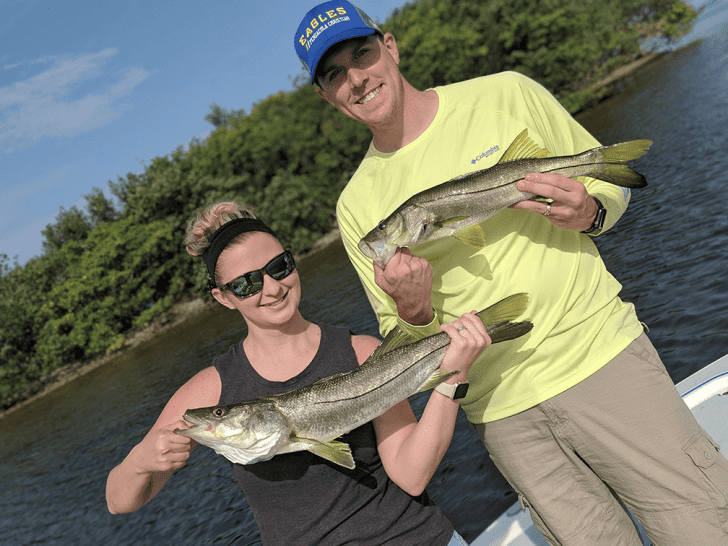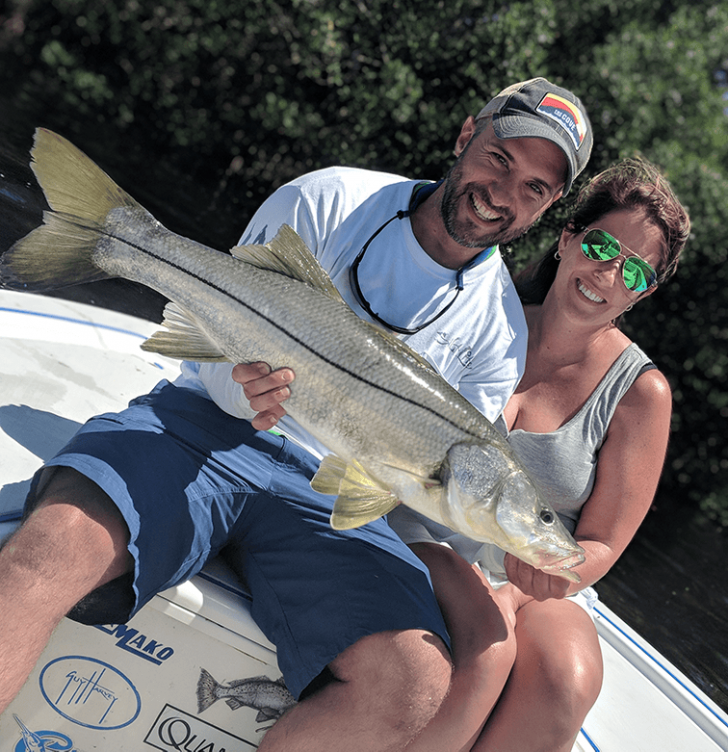by Capt. Mike Grispo

What a blessed month of fishing it has been! I am happy to report that the snook bite has been absolutely stellar! I cannot remember a time when I’ve caught and released so many healthy snook. I’ve had plenty of clients lately that went from never catching one in their life, to catching over thirty in one spot. I’m going to share with you some keys to having a successful day on the water and catching plenty of snook.
There are many lures, soft plastics, jigs etc. that can mimic a healthy live bait but nothing is better than the real thing. Spending the time in the morning to load the live well with pilchards and threadfins is going to be beneficial to a successful trip. I like to look along sandbars that are adjacent to grassy bottom and idle around slowly until I start to see them either dimpling at the surface or schooled up in three feet of water. Once I see them, a little chum and a few throws of the cast net and I’m ready to go.
The tide charts give us a pretty accurate schedule of the snook’s feeding patterns, as they like to feed when the tide is moving. Whether it’s going in or out, as long as it’s moving they are usually going to eat a well-placed bait. When it comes to finding them, it’s a matter of idling around and keeping your eyes open. A good pair of polarized glasses will have you seeing into the water fairly well. I like to cruise maybe fifty or so yards of a shoreline and if I see nothing I move on. When you see a snook, always pay attention to the direction he is facing. If he’s facing into the tide then most likely, he’s looking for a snack. If you see a school of snook and you happen to spook them a little bit, no big deal, just move away and return after ten or fifteen minutes, most likely they will return to the same spot.
When it comes to tackle, I like to use fifteen-pound braid, down to thirty-pound fluorocarbon leader, to a size two or three circle hook. No swivels! A swivel has just enough weight to alter the baitfish’s movement. Keeping the line straight while the bait’s out is important. When the snook strikes, the circle hook will get him in the corner every time. Once out of the water, do your best to get that hook removed quickly, get your photo, and release the fish slowly.
In summation, make sure you’ve got great bait and don’t be afraid to idle slowly around shorelines and sandbars keeping your eyes peeled. If your normal spots aren’t producing then it’s time to find some new ones! Until next time, tight lines! Captain Mike Grispo



